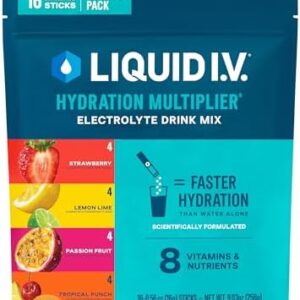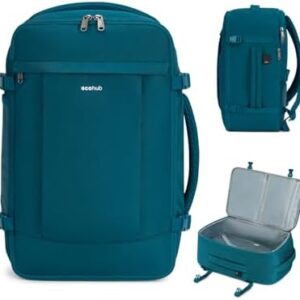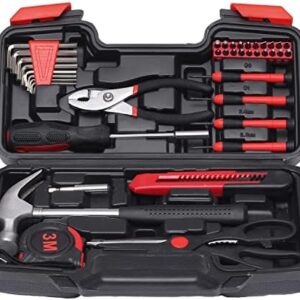
You want to create a healthy meal plan so you can eat well, keep fit, and stay sane doing it – all within the 24 hours we’re allotted each day. The challenge? Designing a weekly meal plan menu that doesn’t require a culinary degree or keep you in the kitchen.
Meal planning sounds easy on paper, but simplicity requires in-depth knowledge, especially when it comes to maintaining a healthy lifestyle. The good news is that you don’t have to compromise – it may take a bit of learning and some experimenting, but you can learn how to design a weekly menu to fit your dietary needs.
Simplicity requires in-depth knowledge, especially when it comes to maintaining a healthy lifestyle.
In this article, we’ll offer a few smart hacks and culinary strategies to help you sharpen your meal planning skills. Let’s roll up our sleeves and let’s get to planning!
A Healthy Meal Plan Starts With a Solid Foundation
Have you ever stared into the fridge wondering what to cook without finding a satisfying solution?
A well-structured weekly meal plan menu means you’ll never have to do that again. You can also shop with purpose, reducing both cost and food waste, and you can focus on bringing more diversity to your diet.
But before you can start your meal planning, you need a solid foundation. This way, if things don’t go as expected (which rarely happens), you have other options. Plus, a strong foundation helps you significantly reduce decision fatigue, which most parents have to deal with day in and day out.
So, how do you lay down the foundation of a healthy weekly menu without getting bogged down in nutritional charts or elaborate cooking?
Start by considering the core elements of a good menu:
- Versatility
- Variety
- Nutritional value
Bonus tip: If you don’t have the time or mental space to plan an entire week of meals and go shopping for ingredients, consider trying a meal delivery service. With a few clicks, you can have low-calorie meals delivered to your doorstep, delivered every week. No shopping, no prep, and no cleanup – just heat and enjoy!
Check Out 6 Healthy Grocery Delivery Services (Plus the Pros and Cons of Each)
Be Versatile In Your Meal Planning With These Healthy Staples
You need a mix of foods that keep things interesting, ingredients flexible enough for multiple meals, and each bite packed with health benefits. There are many health benefits that come with eating a colorful variety of fruits and veggies.
A well-varied diet is the ideal way to intake a wide range of nutrients, which will help you stay healthy and feel energetic.
Let’s take spinach as an example – it works in your morning omelet and smoothies, but you can also add it to your dinner salad or pasta dish. Plus, spinach is a healthy and nutritious ingredient.
Do the same with proteins and fats. You also want to focus on produce that stands the test of time, like carrots, bell peppers, and kale. Whole grains like brown rice or farro are also great options.
Read: 10 Unexpected Signs You’re Not Getting Enough Protein
Healthy Meal Planning Ingredient Staples:
To make things easier, here is a list of ingredients you should always have at the ready for cooking a wide range of healthy meals in minutes.
- Garlic: infuse oils and dressings; minced in marinades; roast whole as a savory spread.
- Onion: caramelize to top burgers; chop raw for tangy pico de gallo; simmer finely sliced in French onion soup.
- Good olive oil: perfect for dressings and also handles sautéing nicely.
- Canned beans (black and chickpeas): throw into salads, mash into burger patties, or simmer in chili.
- Brown rice: serve as a base for stir-fries, mix into burrito bowls, or pair with grilled vegetables.
- Oats: cook as a morning porridge, blend to form pancake batter as needed, and bake in cookies.
- Quinoa: a protein-rich grain for cold salads, hot side dishes, or as a stuffing for roasted vegetables.
- Almonds: chop and sprinkle over oatmeal, blend into almond butter, or add a crunch to stir-fries.
- Nuts and seeds: sprinkle effortlessly over breakfast bowls, just as they add crunch to your evening meal.
- Apples: bake with cinnamon desserts, crisp up in salads, or slow cook into homemade applesauce
Fresh Veggie Inspo:
- Bell peppers: chop for fajitas, dice for omelets, or snack on them raw.
- Sweet potatoes: bake whole as a filling lunch option, cube into hash browns, or slice into homemade fries.
- Carrots: roast with herbs, shred into slaws, or dip in hummus for a crunchy snack.
- Tomatoes (fresh or canned): dice as salsa fresca ingredient, cook down into sauces or enjoy fresh in salads.
- Avocados: slice onto toast, mash for guacamole, or blend into chocolate mousse.
Refrigerated Goods:
- Whole chicken: roast for a main course, shred for tacos, or use leftovers to make stock.
- Eggs: hard-boil for easy snacks, scramble with veggies for breakfast, or incorporate into fried rice.
- Greek yogurt: enjoy at breakfast with fruit and honey, use as a tangy marinade, or swap in place of sour cream.
- Feta cheese: crumble over watermelon slices, fold into spinach pies, or enhance pasta dishes.
- Frozen mixed berries: whip up nutrient-rich smoothies, fold into yogurt parfaits, or top off oatmeal bowls.
Also, don’t forget about herbs and spices so your food will have flavor!

Unsplash: Tina Dawson
Meal Planning Variety and Nutritional Value
Now, it’s time to build your recipe database. This can be a fun thing you do every Sunday for an hour or so, or it can be something you do instead of mindlessly scrolling on social media.
To find interesting and nutritional recipes, follow healthy food blogs, browse Pinterest, or subscribe to YouTube culinary channels you enjoy. The point is to make the process fun and relaxing so you’ll feel motivated to find new recipe ideas and continue meal planning each week or month.
Pro tip: Use a note-taking app and write down recipes you want to try, with their nutritional information. That way, when the week gets hectic and food shopping is the last thing on your mind, you’ll have a list at the ready.
Focus on creating variety using wholefood ingredients that have well-known health benefits for your gut and brain. A well-varied diet is the ideal way to intake a wide range of nutrients, which will help you stay healthy and feel energetic. Supplements can help boost memory and focus and improve your immune system, but nutrition must always come first.
Mix Your Menu Up
Once you have your foundation of ingredients and recipes, you have everything you need to design a healthy weekly meal plan menu in minutes. Simply go through the list of available ingredients and pair them with the recipes you want to try based on your current dietary and nutritional needs.
The point is to make the process fun and relaxing so you’ll feel motivated to find new recipe ideas each week or month.
Here are a few tips to make sure you maintain a good level of variety and nutrients without spending half your life in the kitchen:
Target meals with minimal ingredients. This often means fewer steps and less cooking time. Lean towards one-pot wonders or sheet pan dinners that deliver flavor without dirtying every dish in the house.
Crockpots make meal planning easy! Try These 6 Healthy Crockpot Recipes for Delicious Dinners In No Time
Include superfoods in your diet. They provide a concentrated dose of nutrients, antioxidants, and essential elements that support health. Plus, superfoods boost energy levels, enhance immunity, and can help ward off chronic diseases, all while delivering maximum nutritional value with minimal calories.
Check Out These 7 Immunity-Boosting Foods to Add to Your Grocery List
Prioritize ingredients known for their health benefits like quinoa, which cooks quickly and is packed with protein, or canned legumes that can be rinsed and used straightaway for fiber richness.
Don’t forget about frozen fruits and veggies. Frozen produce is as nutritious as their fresh counterparts and are harvested at peak nutrition time. Similarly, pre-washed salad greens can be the base of multiple meals.
What these meals should look like will depend on individual taste and dietary requirements, but the mantra is clear: keep it straightforward yet substantial.
Meal Plan Recipe Ideas
If you’re lacking inspiration (which often happens when you’re in a hurry), here are a few meal prep recipes that take less than 30 minutes to prepare and stay fresh in the fridge for several days.
1. Lemony Chickpea Tuna Salad
Chickpea and tuna go well together and bring an infusion of protein and carbs without jumping the fence on calories. This recipe, which serves four people, brings in 20-25g of protein, around 300 kcal, and 20 to 30g of carbs per serving.
Ingredients:
- 1 can chickpeas (drained and rinsed)
- 1 can tuna in water (drained)
- 2 tablespoons mayo or Greek yogurt for a healthier twist
- Zest and juice of one lemon
- Salt and cracked black pepper to taste
- Chopped cucumber for extra crunch
- Optional add-ins: chopped celery, diced red onion, fresh parsley
Instructions:
1. Mash the chickpeas in a large bowl using a fork until they reach a chunky and spreadable consistency.
2. Fold in the drained tuna, mixing well with the mashed chickpeas.
3. Stir in mayo or Greek yogurt (lower in fat and calories) until the mixture is well combined and creamy.
4. Add lemon zest and juice to infuse a bright flavor into the salad.
5. Season with salt and cracked black pepper.
6. Gently mix in chopped cucumber to add freshness and crunch to each bite.
7. For more complexity, consider adding chopped celery, red onion, or fresh parsley if on hand.
Serve this versatile salad over greens for lunch as an accompaniment with crackers for snacking, or scoop into a hollowed-out tomato or avocado half for an elegant presentation.
2. Quinoa Taco Bowls
Whenever you’re in a hurry but need something flavorful and filled with protein and good fats, try this recipe. It doesn’t require much cooking, and one serving amounts to 350-400 kcal, 15-20g of protein, and 8-12g of fat. The ingredients are enough for four servings.
Ingredients:
- 2 cups cooked quinoa
- 1 can black beans (drained and rinsed)
- 1 can corn kernels (drained)
- 1 cup cherry tomatoes, halved
- Shredded lettuce
- Shredded cheddar cheese
- 1 ripe avocado, diced
- Juice of one lime
- Salt and pepper to taste
Instructions:
1. Divide the cooked quinoa among four bowls as a base.
2. Layer each bowl with equal parts black beans, corn, and cherry tomatoes.
3. Top with shredded lettuce and cheddar cheese for that taco essence.
4. Add in diced avocado for creamy richness.
5. Squeeze fresh lime juice over each bowl and season with salt and pepper to taste.
3. Chicken and Vegetable Stir-Fry
This is a high-protein recipe (around 30g of protein/serving) that’s quite low in calories (350-400 kcal/serving). The ingredients listed below are enough to prepare 4 servings, and you can keep leftovers in the fridge, preferably in a closed container, for up to 4 days.
Vegetarian or vegan? Swap out the chicken for tofu and/or double up on the broccoli.
Ingredients:
- 1 lb boneless, skinless chicken breasts, thinly sliced (or swap for tofu)
- 2 cups of bell peppers, julienned
- 1 cup broccoli florets
- 1 medium carrot, thinly sliced
- 3 tablespoons soy sauce
- 2 tablespoons honey
- 1 tablespoon freshly grated ginger
- 2 garlic cloves, minced
- Sesame seeds for garnish (optional)
- Cooked brown rice or quinoa
Instructions:
1. In a hot skillet or wok over medium-high heat, cook the chicken slices (or tofu) until they’re just cooked through.
2. Remove the chicken and add bell peppers, broccoli, and carrots to the pan; stir-fry until they’re tender-crisp.
3. While vegetables are cooking, mix soy sauce, honey, ginger, and garlic in a small bowl.
4. Add the chicken back to the pan with the vegetables and pour your sauce over it all.
5. Cook everything together for another few minutes until heated through.
6. Serve over a bed of brown rice or quinoa and sprinkle with sesame seeds if desired.
Key Takeaways
Simplicity is only challenging when you lack all the necessary parts to achieve it. So, if you want to create weekly healthy meal planning menus in minutes, take the time to restock your pantry and fridge and take good care of your recipe database.
Also, make use of all the shortcuts you need to ensure you stay on track. The main reason we slip up and fall under the spell of fast foods or sweet goodness is a lack of preparation. With the right plan and backups, you’ll be the one in control of your diet!
This article has been read 167 times. Share it and spread the love!





